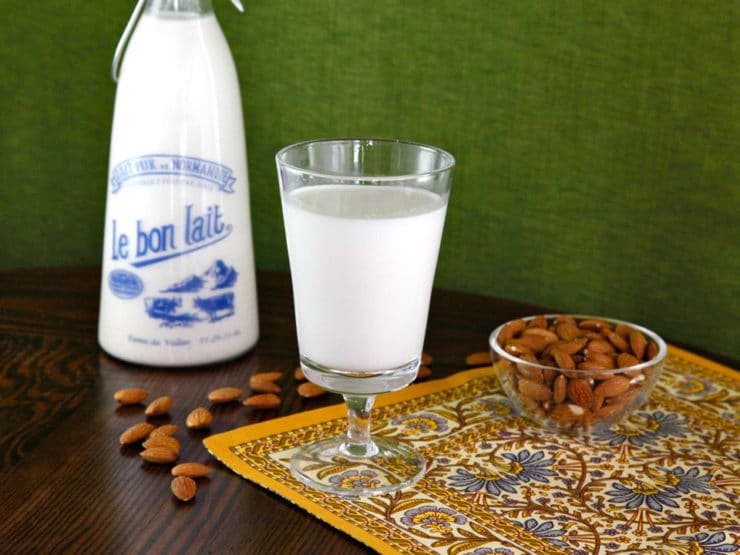
Creamy Homemade Almond Milk – Learn to make creamy non-dairy almond milk at home. Use in place of dairy milk in coffee, over cereal or on its own!
In response to your requests, I will be covering how to make several different dairy free milks over the next few months. This week I’m sharing how to make almond milk, which is probably the most popular nut milk out there. Sure, you can buy almond milk at the store, but making it yourself at home ensures that the milk is raw and full of its optimal nutritional power. When you make it at home, you also have total control over the ingredients. I don’t know about you, but I prefer knowing exactly what is going into my food… and subsequently into my family’s bellies!
Almond milk, in its most basic form, is made from filtered water and almonds. It’s a non-dairy milk, which means it contains no lactose. Almond milk is easily digested by most folks who are lactose intolerant (except for those who have a nut allergy… I’ll have an option for you coming up in a future post!). Because you’re making it at home, you have total control over the flavor– the sweetness level, the texture, the fat content and the overall taste. For those who keep kosher, it’s a terrific substitute for dairy milk in recipes that you would like to keep pareve. I prefer homemade nut milks to non-dairy creamers, which often contain chemicals and preservatives. No strange additives here!
Unlike dairy milk, almond milk is cholesterol free… in fact, consuming almond products on a regular basis can actually lower your LDL-cholesterol. Almonds are rich in monounsaturated fats, the same type of “good fats” that can be found in olive oil. These types of fats have been associated with a reduced risk of heart disease. Almonds are also a rich source of Vitamin E, magnesium and potassium.
In its pure unsweetened form, almond milk makes a fine substitute for plain milk. When using it on cereal or in my tea, I like to give it a touch of sweetness (throwing a whole date into the blender works great, or use honey, stevia or agave nectar). Adding a little vanilla and salt rounds out the flavor. Depending on what you plan to use your almond milk for, you can experiment and adjust the ingredients to taste. A nut milk bag will help you strain the milk to achieve a thin, grit-free texture; if you don’t have one and don’t want to order one, a fine mesh strainer, clean tea towel or multiple layers of cheesecloth will work just dandy.
How many almonds does it take to make almond milk?
This recipe calls for 1 cup of raw, unsalted almonds, which is about 100 almonds.
How long does homemade almond milk last?
Homemade almond milk will last for 3-4 days if kept in the refrigerator.
Is it cheaper to make your own almond milk?
Some comparisons have shown that the cost of making your own almond milk is around the same as buying store bought almond milk. However, making your own allows you to add your own flavors and doesn’t call for additional preservatives or additives, so for many this benefit makes the cost worth it.
Recommended Products:
We are a participant in the Amazon Services LLC Associates Program, an affiliate advertising program designed to provide a means for us to earn fees by linking to Amazon.com and affiliated sites. As an Amazon Associate I earn from qualifying purchases.
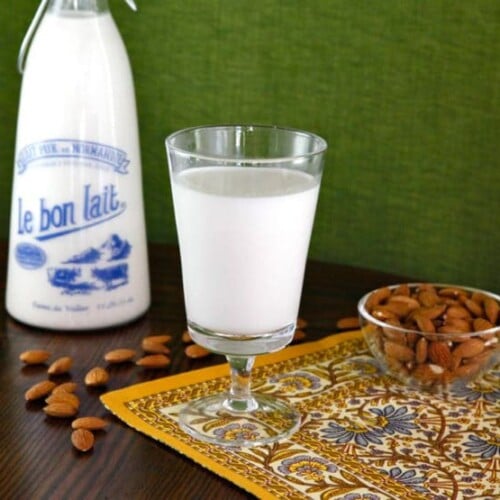
How to Make Almond Milk
Ingredients
- 1 cup raw unsalted almonds, skin-on
- 4 cups filtered water, plus more water for soaking almonds
- 1 1/2 teaspoons honey, agave nectar, maple syrup, or one whole pitted date (optional)
- 1 teaspoon vanilla extract (optional)
- Dash sea salt (optional)
NOTES
Instructions
- Place raw almonds in a bowl and cover with cold water. Allow to soak overnight up to 48 hours, then drain and rinse. If soaking longer than overnight, change the cold soaking water every 12 hours.

- After soaking, drain and rinse the almonds. Do not peel the almonds; according to my recipe testing, keeping the skins on actually helps to reduce the grittiness of the almond milk (counter intuitive, I know!). Combine soaked almonds and 4 cups of filtered water in a blender.For a whole milk texture, I use 4 cups of water to 1 cup almonds. For a thinner texture, feel free to add more water-- you can adjust the texture to taste. The more water you add, the lower in fat the milk will be per serving; however, you don't want to add too much liquid or it will turn watery. Best to add water in small batches till the texture seems right to you.

- Blend on low, then slowly raise the speed to high for 1-2 minutes till the milk is completely smooth and no chunks of nuts remain. If desired, add sweetener, vanilla and/or salt to taste, then blend again to combine (if using a date, make sure you blend till it's completely pulverized). Feel free to adjust the sweetness to taste.

- Strain milk through a fine mesh strainer, tea towel, cheesecloth or nut milk bag into a storage container. A nut bag will work best for keeping your milk smooth and chunk-free. I usually strain the milk into a quart mason jar, which works perfectly with the 4 cup to 1 cup ratio of water to almonds.

- If using a mesh strainer, you will need to agitate the solids a bit to help all the milk drip through. I don't scrape them (this can push the solids through the strainer), but I do gently stir and move the solids around to make room for the liquid to come through. Similarly, if using a nut bag, you will need to gently squeeze the bag till all of the milk seeps through.

- Transfer milk to the refrigerator and chill thoroughly. It should keep for 3-4 days if refrigerated. I usually shake mine a bit before pouring to make sure it's well blended.

- Once you're finished straining the milk, you will have a small amount of leftover almond pulp. This can be discarded or dehydrated into almond flour and used as a gluten free breading for fish or chicken or mixed into baked goods. To do this, first adjust your oven to the lowest heat setting. Place the leftover almond pulp in a mesh strainer for about 30 minutes to allow any remaining liquid to drain off.

- With a rubber spatula, spread the pulp as thinly as possible onto a baking pan lined with parchment or a silicone baking sheet. Place in the oven at 200 degrees.

- Allow the paste to dehydrate for a few hours up to overnight. Check every couple of hours; when the meal hardens into a dry sheet, it's finished.

- Break up the dehydrated paste and pulverize using a food processor for 1-2 minutes. You can also use a fork, but a food processor will give you a much finer grind.

- You will be left with about ½ cup of almond flour.

- Use almond milk anywhere you would use regular milk-- in coffee or tea, on cereal, or as a milk substitute in recipes.

Nutrition


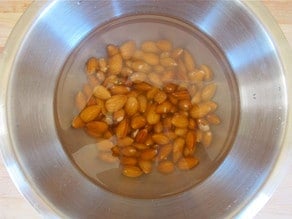
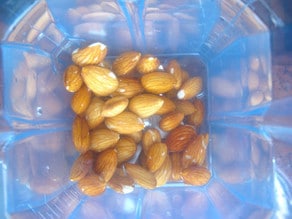
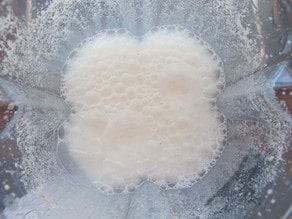
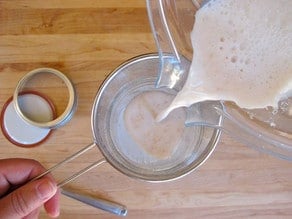
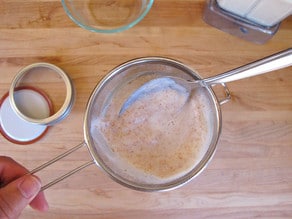
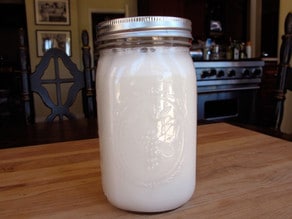
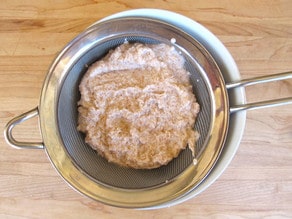
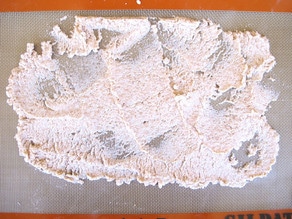
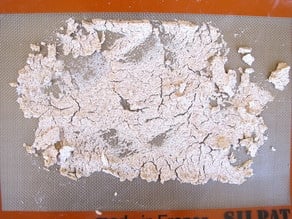
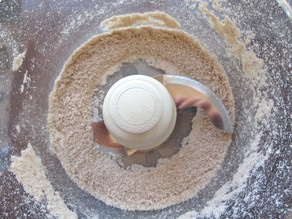
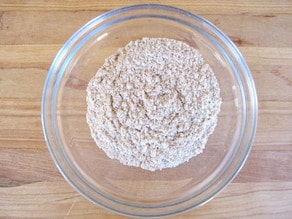
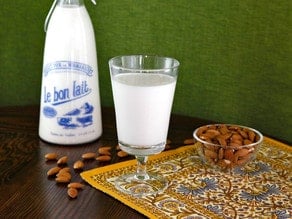


Hi Tori, I wanted to tell you that I ordered the Nut Bag and the Case of 12 wide mouth jars from your links. It was my way of saying thank you for all the awesome information on making the almond milk that was my reason for being on the internet tonight and boy did I reap the rewards on the recipe. I can’t wait to try it and will rate the recipe when my new Vitamix gets here in a week or so and I can try it. So thank you again and I love your site. (I did look for a place to sign up for your blog but couldn’t find one.) Have a great weekend , JoeyAnn
Thank you JoeyAnn, that is very kind of you! There is a signup link in the “Subscribe” box under my picture on the right sidebar. 🙂
Thank you for your wonderful information for almond milk. I wanted to try some but all of the stores have it with sodium in it and I didn’t want sodium.
I followed your instructions and made my own, it came out perfect. Thank you so much Tori.
Leisa L
I just made my first batch of almond milk and all i can say is “WOW” what a difference it is from buying a store bought carton!!! It’s so easy and I know that the only things I put in my almond milk is almonds, one pitted date and filtered water!!! I love it.
Thank you, Tori. You’re really giving me so much knowledge to make my own beverages.
Happy to hear that Josephine!
I make nut milks by grinding the nuts to butter in food processor, then slowly adding water in the manner you add oil to mayonnaise and making sure it remains smooth. There is no straining necessary and the whole goodness of the nuts remains in the milk. there is no additional mess or left over meal your method involves.
Yes, but don’t the solids settle? Seems like the milk would be overly thick and would separate with this method.
Hey Tori,
So my little boy is allergic to cows milk so I did your recipe à few times, it came out juste great and he loves it! I’m making a jar every 3 days so he can have his bottle every morning as he wakes up 🙂
I do have a lot of almond meal in my freezer and was wondering what can I use it for? And could you use that to prepare home made marzipan?
Thanks !
The Recipe is so delicious and tasty. I have tried many such similar recipes but none have worked so great for me. Thanks a lot for those detailed and step by step instructions that made it easier to get the job done in no time. I love almond milk and I am greatly fascinated by its health benefits around us.
I used half a date and that was plenty sweet for me. Loved this recipe and the taste of my almond milk
Thank you for your clear instructions. I am wondering if I have to strain it or can I leave it as is?
Brigette, straining makes a smooth, milk-like texture. If you don’t strain you’ll end up with solids settling and the texture will be somewhat gritty.
i have been making almond milk and every week it it goes sour within 12 hours. I went out and bought more almonds and my milk still went sour overnight. I bought the almonds from the same place so maybe I am continuing to buy bad almonds? Maybe the almond milk is not being refrigerated at a cold enough temperature??? Any ideas?
Kelley, I would try cooling down your fridge temp by a few degrees if you can. Mine always lasts a few days, but I keep my fridge pretty cold.
Can you used almond paste to make almond milk????????
Does anyone know where to order raw almonds on line to make the milk by mail? Thanks
Living in Baja, I order almonds from Costco and have them mailed to me. They are unsalted, raw almonds for about $13 for a 3 pound bag. I’ve been making my almond milk (with and without peeling) for about 6 years and never had a bad batch. I decant it into glass milk bottles. It almost always separates after a day or two but I just shake it up before pouring. Good stuff!
Tori, after your comment, to see if almonds absorb flavors, I just placed half a tangerine, cut side up, on a glass plate with some almonds around and a glass bowl above…….see if it absorbs the orange in two days.
Tori
Maybe because Passover is on my mind, the way people make vanilla sugar, do you think that vanilla pods could be left in the bag of almonds? With or without the beans removed?
Thank you for the Purim contest, I was so shocked when I won the prize of baked pans. It will be well used and cherished.
Mashugana, it’s an interesting thought re: vanilla almonds… I doubt that whole raw almonds will be as absorbent as sugar, though. It might be worth a try! Congrats on winning the contest, there were so many entries!!
Hi! I have been making my own almond milk for a few months now and I absolutely love it… But I’ve always been curious about the vanilla – do you add vanilla extract or vanilla powder? I have seen it recommended several places to use vanilla but it never specifies how much or what kind… Thank you!
Hi Ginger– I don’t usually add vanilla, but the times I have I’ve used an organic pure vanilla extract. You only need a little to give it that hint of vanilla flavor. 🙂
Ok! Good to know. Thank you!!
Can homemade almond milk be frozen? The commercially made product cannot as is separates. Has anybody?
Hi Jenner, please read the comments above, this has already been addressed by another reader. I have never frozen it myself but other readers have had good results.
Thanks Tori! Will check the stores.
MASHUGANA:
what is “wet flour” that you use the almond meal with?
if i substitute almond meal in recipes that call for almond flour will it not come out unless i grind it into flour?
I’ve been looking but it seems a lot of them are now totally raw.
Any suggestion where to order certified organic raw almonds?
Thanks
Mahasti- try Whole Foods if there is one in your area, or Erewhon. They carry raw organic almonds.
from the above comment
(meaning as in) should be (meaning as is)